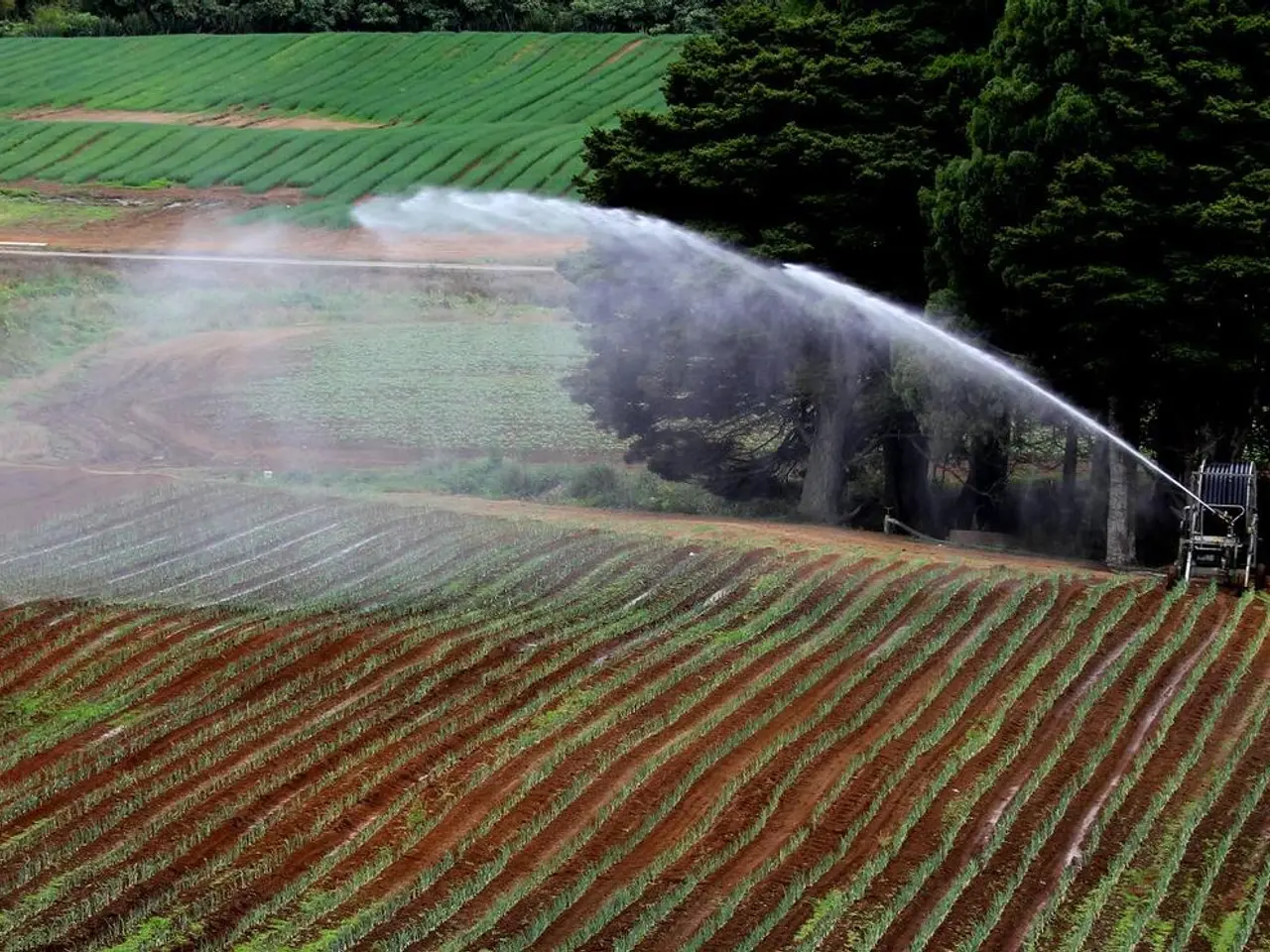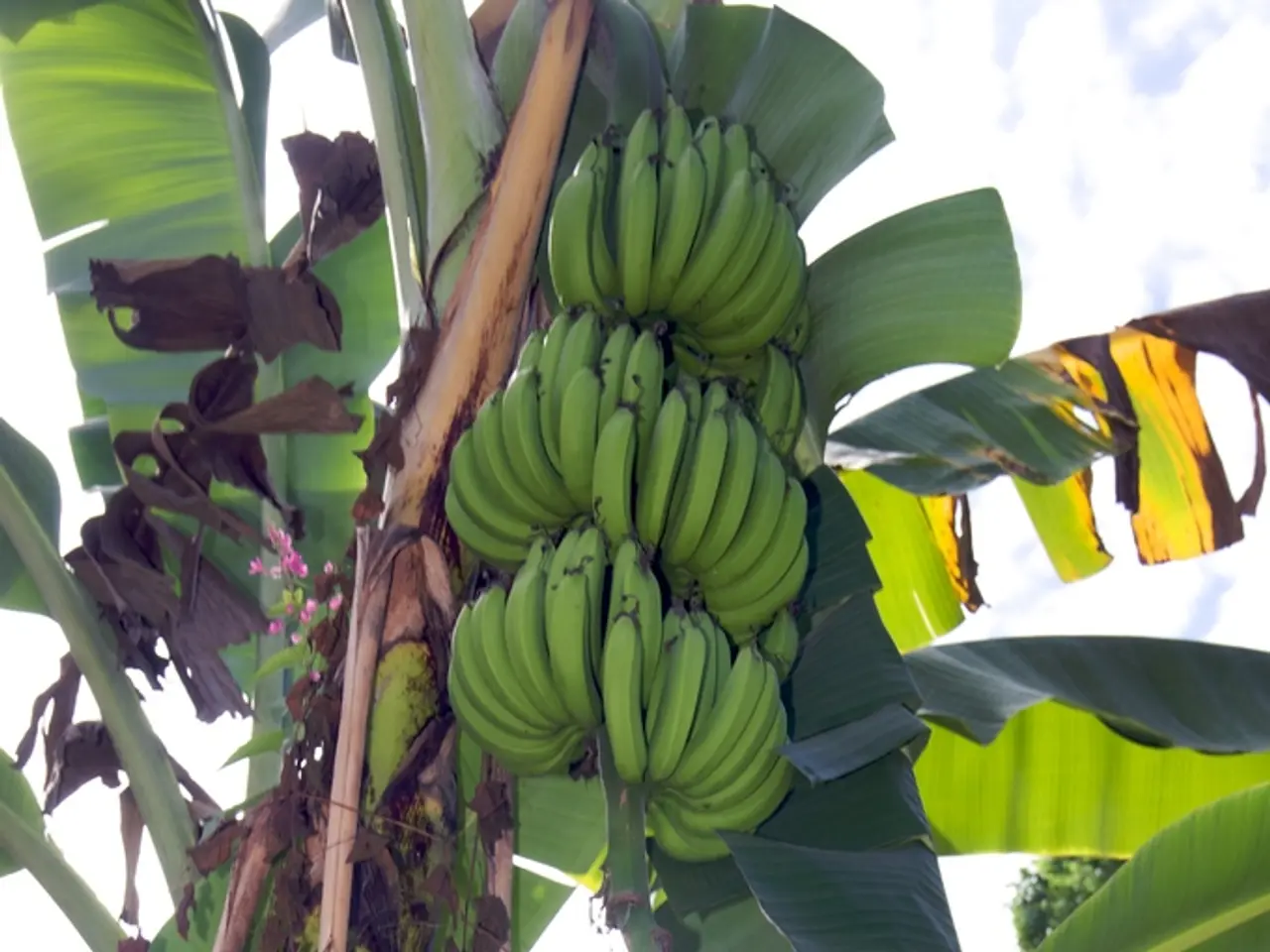Strategies for Amplifying Agricultural Yield in Organic Farms
In the heart of the countryside, a dedicated farmer is cultivating more than just crops – he's cultivating a thriving ecosystem. This modern-day steward of the land employs a variety of techniques to maintain soil health, reduce environmental impact, and ensure the long-term sustainability of his farm.
One of the farmer's key strategies is cover cropping and crop rotation. By planting cover crops and rotating diverse crops, he enriches soil organic matter, prevents erosion, breaks pest and disease cycles, and improves nutrient availability. Rotating legumes even leverages nitrogen-fixing bacteria to naturally boost soil nitrogen levels.
Minimizing soil disturbance is another vital aspect of the farmer's approach. Reduced or no-till farming preserves soil structure, maintains beneficial microbial and fungal networks like mycorrhizal fungi, enhances water retention, and reduces erosion.
Organic amendments and compost application are essential components of the farmer's method. Adding compost, manure, and green manures builds soil organic matter, stimulates soil microbial activity, enhances nutrient supply and water-holding capacity, and reduces reliance on synthetic fertilizers.
Agroforestry and polyculture, the integration of trees, crops, and livestock, create windbreaks, improve biodiversity, stabilize ecosystems, enrich soils via leaf litter, and diversify farm outputs. This approach improves resilience and reduces monoculture risks.
Precision water and nutrient management play a crucial role in the farmer's practices. Drip irrigation, rainwater harvesting, and timely irrigation reduce water waste and runoff, maintaining optimal soil moisture for crops without excess resource use.
Biodiversity and soil microbial enhancements are also integral to the farmer's approach. Encouraging decomposer organisms and fostering symbiotic mycorrhizal fungi networks supports natural nutrient cycling and plant growth, creating a dynamic living soil ecosystem.
Technology and knowledge transfer are essential tools in the farmer's arsenal. Real-time farm health analytics and farmer training can help overcome organic farming challenges at scale, such as yield gaps, labor demand, and certification complexities.
The farmer is continually learning, attending workshops and reading up on new ways to improve. He uses irrigation systems for efficient watering of crops and compost bins to recycle waste and create rich soil. He diversifies his crops to expand his farm, reduce risks, and attract different customers. During off-seasons, he plants cover crops to prevent erosion and add nutrients back into the soil.
Physical barriers like row covers and nets protect crops from pests, and the farmer pays attention to the nutrient needs of different crops and how they affect the soil. He even attracts natural predators like birds and beneficial insects by providing habitats.
Organic farming offers several key benefits to the environment, including reducing pollution, supporting biodiversity, and improving soil health. Community Supported Agriculture (CSA) programs allow local people to buy shares of the farmer's harvest, providing cash upfront and building a loyal customer base.
This holistic approach builds resilient agroecosystems that deliver both productivity and ecological benefits as global demand grows. By adopting diverse, nature-based, and technology-supported strategies, farmers can scale organic farming sustainably while minimizing environmental harm like erosion, chemical pollution, and water overuse.
- The farmer's holistic approach to farming includes the use of organic farming methods, such as cover cropping, crop rotation, and minimal soil disturbance, which aim to improve soil health, promote sustainability, and enhance the quality of his produce.
- Embracing environmental-science principles, the farmer utilizes technology like precision water management, drip irrigation, and rainwater harvesting to maintain optimal soil moisture and conserve water resources, contributing to sustainability and reducing environmental impact.
- To further foster sustainability and environmental-science on his farm, the farmer employs Agroforestry and polyculture, methods that encourage biodiversity, stabilize ecosystems, enrich soils, and reduce monoculture risks, ultimately creating a resilient agroecosystem for the future.



